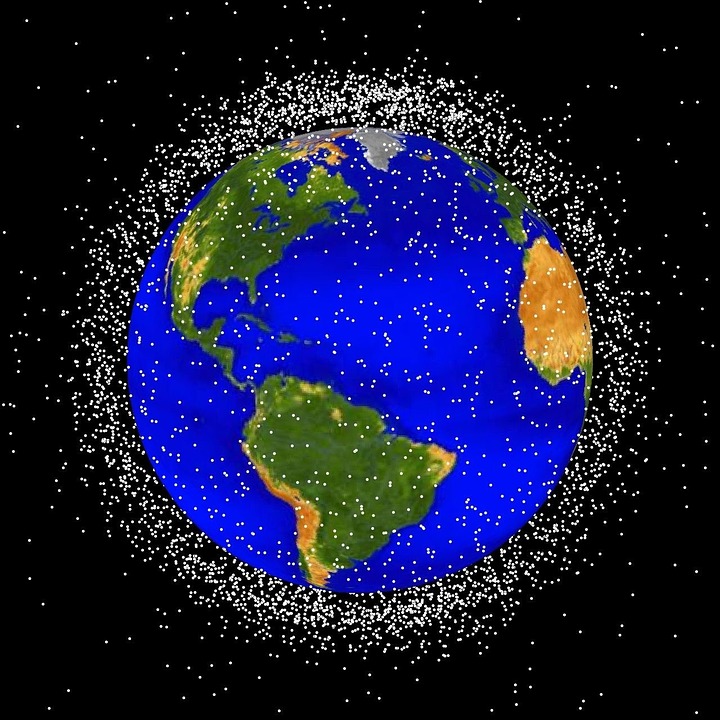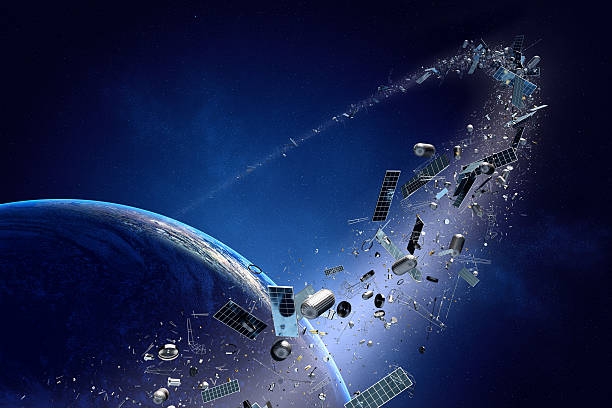Scientists at the Shanghai Academy of Spaceflight Technology (SAST) have devised an ingenious way to combat the growing problem of space debris. The team fitted a drag sail to a Long March 2 rocket and successfully launched it in July this year. Rocket launches often leave discarded booster stages in low-earth orbit, adding to the pollution of near-earth space. The pilot testing for the sail came as a surprise to many space agencies when, a day after the rocket’s launch, the 25 square meters deorbiting sail was unfolded.
To understand how the sail works, it helps to have an idea of the type of collateral debris that is generated every time a rocket is sent into space. It takes a lot of fuel to shoot heavy objects high enough out of the atmosphere to reach orbital space. These fuel tanks are heavy and must be discarded as soon as they are empty, so that the rocket can reach it’s intended altitude. These empty stages, and other discarded parts like payload adaptors, are left behind and orbit the earth until they eventually de-orbit and break up as they re-enter. However, this process can take many years, and so the volume of space debris is growing rapidly.

The way the drag sail works is to create friction against the thin upper atmosphere, which slows the payload adaptor down in the course of its orbital journey. As we know from high-school physics, objects that contend with more atmospheric resistance, will slow down faster and come back to ground sooner. The drag sail is made of a fine, durable membrane that unfurls to create drag, and increase the speed at which the object will de-orbit.
Although it has long been theorised, the successful deployment of this sail represents a breakthrough as this new technology may help to solve the mounting “space-junk” problem in Earth’s low orbit. The less time debris spends in orbit, the lower the chance it has of hitting an active satellite and creating a chain reaction. It also presents companies and organisations with an affordable option to “clean up behind themselves” in future.
If you consider that LEO (Low-Earth orbit) is already facing a crisis of tiny objects and artifacts speeding around the planet, every new launch means that we’re adding to the problem. In fact, the issue is so big now that there are dedicated teams at multiple agencies that specifically track every piece that is currently in orbit. According to the European Space Agency, the individual bits of junk number approximately 31,650 individual objects to date. What makes it worse is that they can only track items above a certain size. Estimates of smaller bits of paint, metal, and glass number in the millions. There is data that suggests that there could be up to 130 million objects between 10cm and 1mm orbiting the globe right now. As it is, the International Space Station (ISS) has had to perform 25 evasive maneuvers since 1999 to avoid catastrophic damage. If you’re wondering what that might look like, the 2013 Alfonso Cuarón film “Gravity” provides a dramatized depiction of the chain-reaction that might occur when an active spacecraft is hit by even tiny objects, travelling at 20 to 30 thousand kilometers per hour.

Space junk isn’t a new threat by any means. Multiple projects are in development to address the issue, and there are teams from across the globe who are working on a way to clear the immediate orbital space above our atmosphere. This sense of urgency is due to the large number of communications satellites that are set to be launched in the very near future. There are many private companies that have set high goals on achieving “full-earth-connectivity” even in remote places, and the only way to achieve that is to send hundreds of satellites into space. It is unlikely that this trend will slow down, because even the most conservative projections promise an exponential “space object” growth rate in the very near future. That means more debris with every single new launch. What makes the innovation of the sail so unique is the fact that although there are organisations working towards a strategy to do a proper “clean-up” of the zone, there have been few that address the problem from a point of long-term sustainable space preservation. The AstroScale and ClearSpace Today projects have both shown promise in cleaning up the existing “dump” that we’ve created. The sail adds to the overall solution. It is the application of both approaches that will make the best long-term impact. If we can clean up existing space junk, and then ensure minimal debris from future de-orbits, we stand a chance of creating a sustainable and viable environment in our orbital space.
There have been calls to declare orbital space an ecologically protected environment, with a strong focus on the long term affects to our atmosphere, observational astronomy, and long-term scientific research. The space science community are calling for companies and countries to establish a “debris footprint” convention, similar to the current Carbon footprint.
Get more news about SAST here
The post Innovation to combat space debris – Chinese scientists introduce drag sail appeared first on Universe Today.
No comments:
Post a Comment